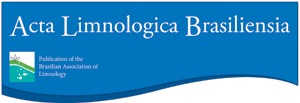Abstract:
Aim In this study, we present the results of a project which used Landsat Collection 2 Surface Reflectance data and European Centre for Medium-Range Weather Forecasts (ECMWF) Reanalysis v5 (ERA5) data to develop a machine learning model to estimate Secchi depth in Lake Yojoa, Honduras.
Methods Satellite remote sensing data obtained within a 7-day window of an in situ measurement were matched with in situ Secchi depth measurements and were partitioned into train-test-validate data sets for model development.
Results The machine learning model had good (R2= 0.57) agreement and reasonable uncertainty (MAE = 0.58 m) between remotely estimated and in situ observed Secchi depth. Application of the machine learning model increased the monitoring record of Lake Yojoa from 6 years of measured data to a 23-year record.
Conclusions This model demonstrates the utility of coordinating in situ sampling schedules of short-term research projects with satellite imagery acquisition schedules in order to increase the temporal coverage of remote sensing derived estimates of water quality in understudied lakes.
Keywords:
remote sensing; water clarity; water quality trends

 Coordinating in situ lake sampling with satellite acquisition days provides a mechanism for addressing data scarcity: a case study from Lake Yojoa, Honduras
Coordinating in situ lake sampling with satellite acquisition days provides a mechanism for addressing data scarcity: a case study from Lake Yojoa, Honduras Thumbnail
Thumbnail
 Thumbnail
Thumbnail
 Thumbnail
Thumbnail


